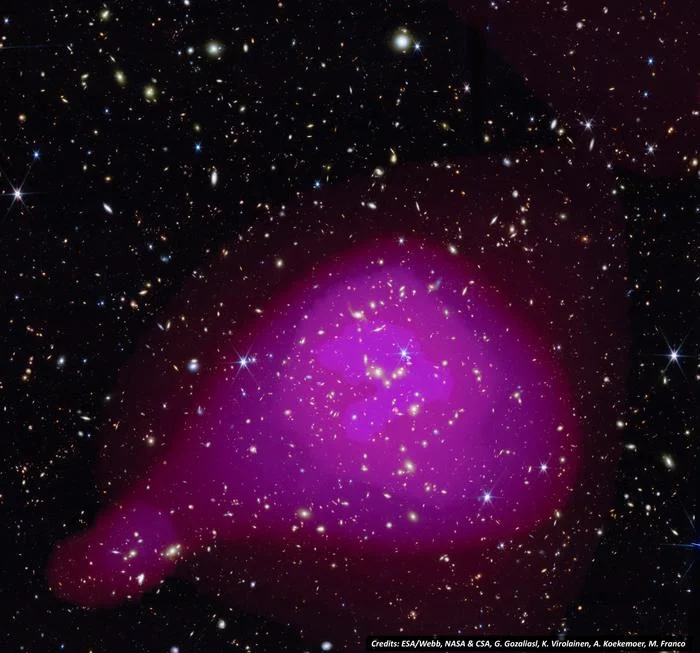
James Webb Telescope Peers Into Early Universe, Unveiling Galaxy Evolution Secrets
The James Webb Space Telescope (JWST) continues to revolutionize our understanding of the cosmos, recently unveiling unprecedented insights into the early universe and the evolution of galaxies. By peering billions of light-years away, JWST is offering astronomers a glimpse into the universe's formative years, revealing the secrets of galaxy formation and the processes that shaped the cosmos as we know it.
One stunning example is the observation of galaxy cluster Abell S1063, a massive collection of galaxies located 4.5 billion light-years away. Acting as a gravitational lens, Abell S1063 bends and magnifies the light from even more distant galaxies behind it, allowing JWST to observe galaxies from the universe's distant past. The resulting images showcase an "incredible forest of lensing arcs," revealing faint galaxies and previously unseen features. This deep field observation, totaling around 120 hours of observing time, is Webb’s deepest gaze on a single target to date, holding the potential to reveal some of the very first galaxies formed.
Further solidifying its impact, JWST has also yielded the largest galaxy group sample ever observed in the COSMOS Web region. This massive dataset encompasses approximately 1,700 galaxy groups, with some located over 12 billion light-years away. This achievement empowers scientists to study galaxy evolution over a vast cosmic timescale, enabling comparisons between early galactic structures and relatively modern ones.
Quoting Ghassem Gozaliasl of Aalto University, who led the galaxy groups detection team, "We're able to actually observe some of the first galaxies formed in the universe. We detected 1,678 galaxy groups or proto-clusters - the largest and deepest sample of galaxy groups ever detected - with the James Webb Space Telescope. With this sample, we can study the evolution of galaxies in groups over the past 12 billion years of cosmic time."

These findings offer crucial insights into processes like star formation within galaxies. Gozaliasl explains, "When we look very deep into the universe, the galaxies have more irregular shapes and are forming many stars. Closer to our time, star formation is what we refer to as 'quenched'… The galaxies have more symmetric structures, like elliptical or spiral galaxies. It's really exciting to see the shapes changing over cosmic time."
This deeper understanding allows astronomers to explore how the brightest group galaxies (BGGs) form through repeated mergers and the role of dark matter in the universe’s structure. The data challenges existing models and inspires new research directions concerning galaxy evolution and composition over billions of years.
The continuous flow of data from the James Webb Space Telescope has set a new gold standard for observations in space, leading to major breakthroughs in how researchers understand the universe's ancient processes, the transformation of galaxy shapes over time, and the forces governing the cosmos.
What new discoveries do you anticipate from the James Webb Space Telescope in the near future? Share your thoughts and predictions in the comments below!